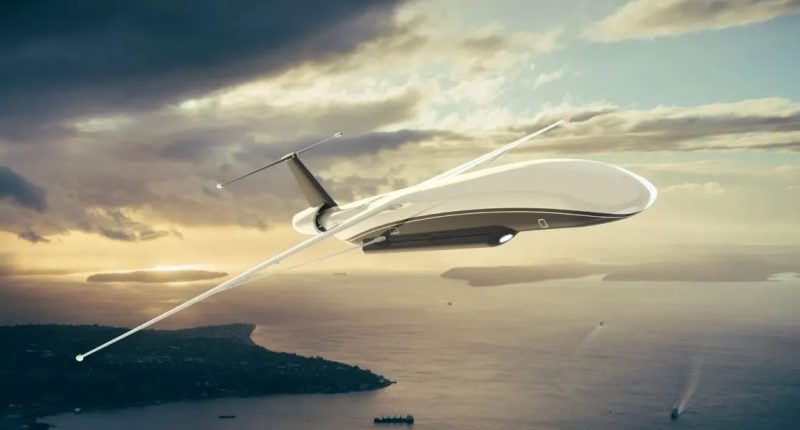PLANS for a futuristic pilotless robo-plane hoped to be three times more powerful than a 747 have been revealed.
The groundbreaking “Droneliner” is expected to soar to new heights and will be able to cross a third of the planet in one go – if it ever reaches the skies.
Droneliner is a transformational global air freight system that carries 40 or more lightweight 20ft shipping containers.
It is a remotely-piloted drone, providing same-day/next-day worldwide bulk cargo delivery – but for a fraction of the cost.
One of the most obvious differences between Droneliner’s autonomous cargo plane and existing options is the shape.
Instead of the usual cylindrical body, it has a rectangular one with smoothed edges, making it better suited for transporting standard-sized shipping containers without wasting space.
read more futuristic plans
Although air freight is a well known concept, shipping by boat is often a more feasible option as it costs far less.
However, the UK company – called Droneliner – claim to not only reduce delivery time but also cut the cost of air freight by 70 per cent.
The problem with today’s air freight planes is that they weren’t designed to carry cargo, they were built to carry people.
This means shipping containers simply won’t fit in round-sided fuselages and so space usage is not optimised.
Most read in Tech
Rather than transporting goods in metal shipping containers, Droneliner intends to use ones made of lightweight plastic and vinyl to save on fuel costs.
When these are empty they weigh about 80% less than standard containers, according to the startup.
On its website Droneliner boasts: “Droneliner is designed to be the most fuel efficient long haul cargo aircraft.
“With the greatest ratio of payload to fuel; hybrid systems to support take-off, landing and taxing.”
It also emphasises that the problems with shipping cargo reach far further than slow moving ships.
There are many more obstacles that might delay the delivery of a boat’s cargo, including vulnerable supply chains and clogged ports.
Recent events have shown how easy it is for supply chains to get blocked or closed.
Pandemics and fears of infection create fragile ecosystems for traditional staffed ports and transport methods. This can add time and cost to the supply chain.
And, shipping ports are getting busier and more congested as container ships grow in number and in size.
Droneliner has proposed two models of the cargo plane, the DL200 and DL350.
The DL200 will be capable of holding 40 lightweight containers and a maximum payload of 200 tons, while the DL350 will support 70 of them and a maximum payload of 350 tons.
Boeing’s 747-8 – one of the largest cargo planes to ever fly – has a payload capacity of about 137 tons.
The smaller plane will have one turbofan engine, while the larger will have two, but they have the same approximate range of 6,500 nautical miles.
This is more than the distance from Beijing to Los Angeles and one third of the earths span.
Both aim to be hybrid electric and able to use sustainable jet fuels, according to Droneliner.
Because an autonomous cargo plane doesn’t need a cockpit, the front and back of the aircraft can be opened and containers rolled into or out of its body, making for faster loading and unloading.
Having no crew on board also eliminates the need for pressurisation on the plane, further cutting costs and weight.
Given the initial risk involved in flying such a huge plane without a pilot on board, Droneliner plans to explore the possibility of operating out of retired military airfields in less-populated areas, rather than out of busy airports.
Read more on The Sun
Despite its meticulous plans Droneliner still needs to build, demonstrate, and get approval for its autonomous cargo plane.
Mike Debens, the startup’s design director, told FlightGlobal he estimates it’ll take more than £billion to get it into production — that funding has yet to be secured.












